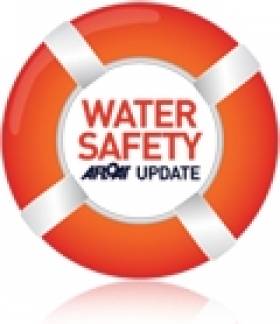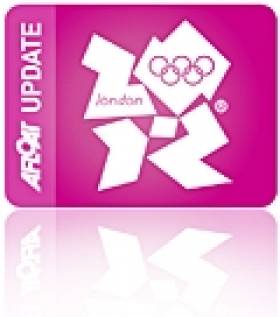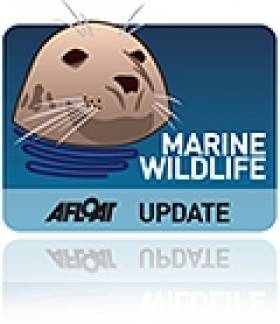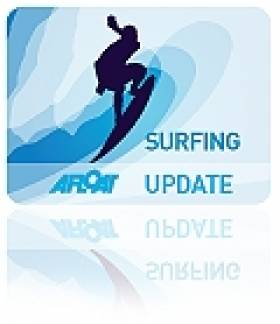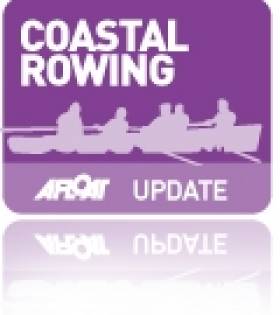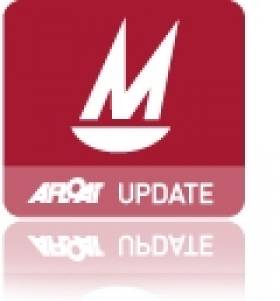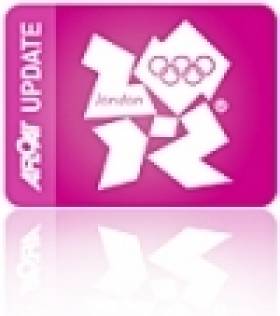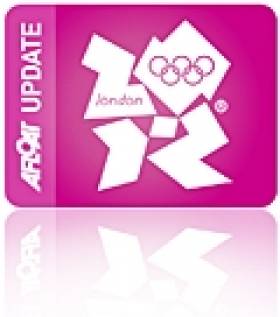Displaying items by tag: Australia
Irish Tourist Drowns in Melbourne
#WATER SAFETY - A 27-year-old Irish tourist had died after drowning in Melbourne, Australia on Tuesday, the Sydney Morning Herald reports.
The tourist and a colleague, who have not yet been named, had reportedly entered the Yarra River in central Melbourne around 9pm intending to swim across. Some minutes later screams were heard from the water.
"At first I thought they were joking, I think most people did," said David Brearley, a barman at the nearby Riverland bar who had warned the pair not to attempt the crossing - but responded to the calls for help and swam out into the river.
Brearley was able to take one man to the shore where he was treated by paramedics. But the other man was lost despite the assistance of other bystanders.
His body was discovered some three hours later floating near a bridge close to the incident.
Paramedic Susie Dean praised Brearley's actions as "absolutely heroic", noting that there is "a very strong current in the Yarra".
The Sydney Morning Herald has more on the story HERE.
NI Fields First Full Team at Commonwealth Fly Fishing Championships
#ANGLING - Two Newtownabbey anglers are part of a six-man Northern Ireland team competing at the 2012 Commonwealth Fly Fishing Championships, which started yesterday in Tasmania.
The Newtonabbey Times reports that Kenny Ferguson and team captain Alan R McDade set out for the Australian island last Wednesday for the competition that runs till 19 February.
They join Campbell Baird and Harvey Hutchinson from Carrickfergus, Banbridge angler Neil Cardwell and Harry McAteer Jr from Belfast for the week-long contest.
The six - who qualified from contests held throughout Ireland organised by the Trout Anglers Federation of Ireland - also comprise the first full team that Northern Ireland has entered in the competition.
Irish Olympic Crews Seeking Qualification in Perth
#OLYMPIC–Ireland takes its place among the world's sailing nations in Perth, Western Australia this weekend for the start of a two-week long sailing championships that is a do or die regatta for Ireland's Olympic squad intent on competing at the London Olympic regatta next July.
There are high hopes that at least two crews will qualify at the ISAF world championships where over 75% of qualification slots are available. Irish officials say Peter O'Leary and David Burrows in the Star keelboat along with Annalise Murphy in the Laser Radial are not only front runners for qualification next week but also Olympic medal prospects.
There is no question both are consistent top 10 performers at world level. There is no question either of their heavy weather performances and as Perth is famous for its strong winds team insiders say a world class result for Ireland is possible.
Murphy won bronze at the Sail for Gold (a dry run of the Olympic regatta) in August and O'Leary won gold (albeit with a different crew) at the same event in 2010.
In the 49er dinghy Ryan Seaton and Matt McGovern are also aiming for the London Games and qualification here is by no means ruled out for the Belfast Lough pair.
Other Irish boats competing in Perth for the London ticket are two times Olympian Ger Owens from Dun Laoghaire now sailing with Howth's Scott Flanigan in the 470 dinghy James Espey will compete in the Laser, while Ross Hamilton will sail in the Finn
First into action on Monday morning will be Hamilton in the Finn. Murphy also has her first race in a 100-strong Laser Radial fleet.
Top international sailors put on a show of strength in Perth's Forrest Place on Friday to help launch the Perth 2011 ISAF Sailing World Championships.
Several thousand people in the CBD watched as the athletes paraded from Barrack Street jetty to the heart of Perth, where they were warmly welcomed by a team of hosts, including Western Australian Premier Colin Barnett.
The athletes had sailed upriver on Rottnest Island ferries from Fremantle, passing under bridges lined with well-wishers, and paraded through the city past a crowd of cheering locals, all braving the 33C heat.
While the Japanese and Korean teams posed for a combined photograph, the New Zealand men squeezed in some rugby practice in the backdrop.
Onlookers lined the streets as the athletes walked behind their national flags, occasionally cheering and posing for photographs.
They were led by a Royal Australian Navy band — described by the Chief Petty Officer Gabe Kicsak as a "rock band on steroids".
Irish flag bearer Scott Flanagan twisted the flag in his hands as he joked that the Perth heat was nothing compared to Ireland's "tropical climate".
Also in the procession was Hungarian windsurfer Aron Gadorvalvi, who could be seen getting a workout with his toddler daughter's pushchair.
Drifting in and out of the procession during the march were Denmark's athletes stocking up on ice-cream.
Among those in the crowd were Trinity Sale (9) and brother Mitchell (6) cheering on their dad, Australian 49er crewman Marty Sale, who will compete with his skipper Duncan Head.
Trinity, who attends Perth's Rawlinson Primary School, said: "I liked it a lot, especially as my dad was marching."
Forrest Place was awash with colour, flags and cameras small and large as the athletes made their entry.
"The Fremantle Doctor is calling — may you all achieve your dreams," ISAF President Goran Petersson said, referring to the world championships and Olympic selection at stake.
The ceremonial part of the event was opened by three Aboriginal dancers, with Dr Richard Walley on the didgeridoo and performing the traditional Welcome to Country.
The Australian anthem was sung by talented Perth busker, Fiona Mariah, a former contestant on a national television talent show.
Marching for the first time were six nations — Kyrgyzstan, St Lucia, Trinidad & Tobago, Cook Islands, Kazakhstan and Montenegro.
The athletes' oath was taken by three-time world champion Marcelien Bos-de-Koning (NED) and the officials' oath by jury chairman Bernard Bonneau.
Perth 2011 chairman Ian Campbell quoted Ernest Hemmingway in his welcome address — from a 1936 magazine article on why people go to sea. "The sea was the last wild place left."
He also quoted at length from a speech made by former USA President John F Kennedy after Australia's challenger Gretel took one race off the American defender Weatherley in the 1962 America's Cup at Newport, Rhode Island.
"It is an interesting biological fact that all of us have in our veins the exact same percentage of salt in our blood that exists in the ocean and therefore we have salt in our blood, in our sweat and in our tears.
"We are tied to the ocean and when we go back to the sea, whether it is to sail or to watch it, we are going back from whence we came."
Mr Campbell said: "I wish all the athletes lots of sweat, as little blood as possible, and tears of joy as you enjoy the magnificent conditions off Fremantle in the coming weeks."
India's coach Mohit Nautiyal said he was confident in his country's team.
"The Finn is definitely our strongest event," Nautiyal said.
"We are very hopeful for gold but [winning] is not very important. We are here because we enjoy sailing," China's team manager Ye Xiao said.
It was clear that most athletes admired the Perth surroundings.
Michael Hestbaek (DEN), a Star class competitor, said: "I originally came (to the opening ceremony) with the idea to have a sail up the river and see the beautiful and spectacular scenery."
"I'm sure there will be more to come," said the three-time world champion in Laser (2) and 49ers (1).
And on his hopes at Perth 2011: "I expect at least three teams to make the top 10 and hope some will medal. I'm hoping to be one of them."
Athletes then flooded the numerous Perth eateries for lunch before catching a train back to Fremantle.
Dolphins Watched Over Drowned Irishman
A pod of dolphins attempted to save the life of an Irishman who drowned in Australia last month after only six weeks in the country.
Irish Central reports that Shaun McBride from Donegal was dismantling scaffolding at a wharf in Dampier, Western Australia, when the structure collapsed into the water.
Police divers reportedly found his body surrounded by a pod of dolphins. One of them was using its nose to push the body to the surface.
Shaun's mother Sylvia told mourners at his funeral in Burtonport that she had been comforted at learning the dolphin's actions in keeping vigil on her son.
Irish Central has more on the story HERE.
Ireland Knocked Out of World Surfing Games
Ireland joins Puerto Rico, Switzerland, Mexico and nine other countries with all surfers eliminated from the Billabong ISA World Surfing Games in Playa Venao, Panama.
Mike Young, Ireland's sole competitor, was knocked out in the opening rounds of the open longboard competition.
After five days of heats, Australia currently leads the team ratings with 19,120 points and seven surfers still left in contention, with Brazil close behind.
The World Surfing Games continue till this Sunday 3 July.
Irishman to Row Indian Ocean Naked
The Daily Edge reports on an Irishman who has announced plans to be the youngest man to row across the Indian Ocean - naked.
Keith Whelan, 30, intends to row the 6,000km route from Australia to Mauritius completely naked in an effort to raise money for anti-Aids charity Keep A Child Alive.
The event management consultant is taking the task completely seriously, having already trained for 18 months in preparation for the arduous task.
Whelan will be rowing in a 23-foot boat fitted with a radio, GPS, a satellite phone and computer equipment that will let him blog and tweet from the middle of the ocean.
If he completes the journey, Whelan would be the first Irishman to complete the Indian Ocean route solo - let alone in the nude.
The Daily Edge has more on the story HERE.
Kearney Takes 2011 Mirror World Title
Irish sailor Ross Kearney came out tops in the 2011 Mirror World Championships in Western Australia last week.
After a bad start that included a capsize in 20-knot winds on the opening day, Kearney and crewmate Max Odell climed ahead of the 61-boat fleet to finish with 38.6 - streets ahead of their nearest rivals in the five-day contest, which was sailed in a variety of conditions.
It's the second win in the Mirror Dinghy Worlds for Belfast Lough's Kearney, who previously took the title in Sweden in 2008 with Adam McCullough.
Kearney named January Sailor of the Month HERE
Kearney and Odell Add World Mirror Title
After a solid performance in testing conditions Ross Kearney and Max Odell have won the Mirror World Championships in Albany, Australia today. The Royal North of Ireland pair finished the series with two good races on the final day to lead the 61-boat fleet after 15 races sailed.
For the final rounds the winds blew 18-22 with gusts to 28 knots for both races - Kearney had a third in the first race this morning, followed by another third and then a second to clinch the series.
The results is so far provisional and subject to confirmation. Overall score sheet available for download below.
Last August, in Sligo, the Belfast Lough duo picked up the European title.
The prizegiving ceremony is underway in Albany now at 8pm Australian time and there will be more updates later on the win for Ireland.
It is not the first time Royal North of Ireland Yacht Club is celebrating a world championship homecoming tonight because Kearney won it previously in Sweden in 2005 aged 19. He was crewed then by Adam McCullough (11) when they lifted the world title at Östersund.
Today is Ireland's fifth win of the regatta that is open to all but is predominantly contested by youth crews.
The Belfast youth's follow in the footsteps of club mates Chris Clayton and Craig Martin who won the championship in Australia in 2003 previous to that Ireland won the biennial fixture in South Africa in 1999 and also when it was hosted in Howth in 2001.

Ross Kearney and Max Odell survive a luff in 20 plus knots ! Photo: Rob Cruse. More photos from Rob HERE.
Kearney named January Sailor of the Month HERE
Irish Sailors Encamped in Fremantle
The Irish Times reports that Ireland's sailing team have encamped to Fremantle in western Australia for some invaluable training ahead of the ISAF World Championships in Perth next year.
Though the Irish contingent is a much smaller one than that at Weymouth in August - the scheduled venue for sailing at the 2012 Olympics - and reports of shark sightings and attacks in the area are apparently on the rise, those who did make the trip were determined not to waste the opportunity.
“Between the breeze and the nice temperature our training is much more effective than back at home,” said 49er skiff crewer Matt McGovern.
He joins fellow 49er Ryan Seaton and Laser Radial sailor Annalise Murphy at the Perth International Regatta this week. Single-hander Ross Hamilton is also competing but outside the auspices of the Irish Sailing Association’s Olympic group.
Murphy Heading for Australian Regatta
The National Yacht Club's Annalise Murphy (Laser Radial) travelled to Australia last weekend for the Perth International Regatta http://www.perth2011.com/ which starts on the 16th of this month. The aim is to gain valuable experience at the venue which will host the December 2011 ISAF World Championships and which will be a vital qualifying event for the the 2012 London Olympic games.
Also heading for Perth is the Royal St. George's Ben Lynch in the high speed 49er dinghy.
After Perth, Annalise travels to Melbourne for the season's first ISAF World Cup event which will be run from Sandringham Yacht Club from 12-19th December. Annalise is currently ranked 20th Womens Laser Radial sailor and 1st under 21 in the World and is campaigning full time to represent Ireland in the 2012 London Olympic Games.
Top youth Laser Radial Sailor Ross Vaughan from the Royal North of Ireland YC has gone down as a training partner for Annalise together with her coach Rory Fitzpatrick.
Also taking part in the Perth Regatta are Irish 49er team of Ryan Seaton and Matt Mc Govern (Ballyholme YC) and Ross Hamilton from the RIYC, Dun Laoghaire.



























